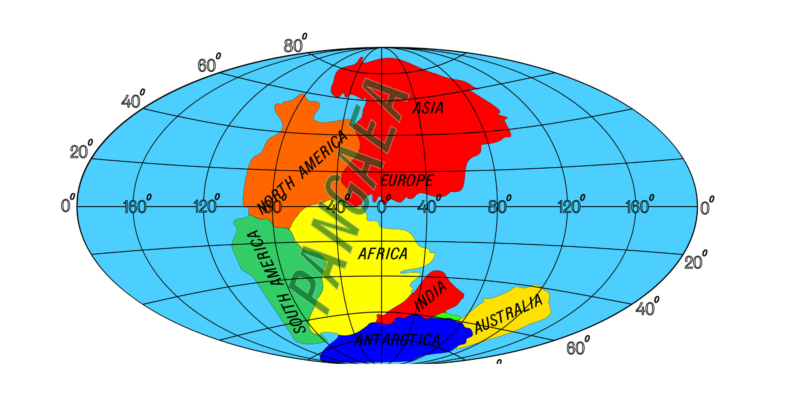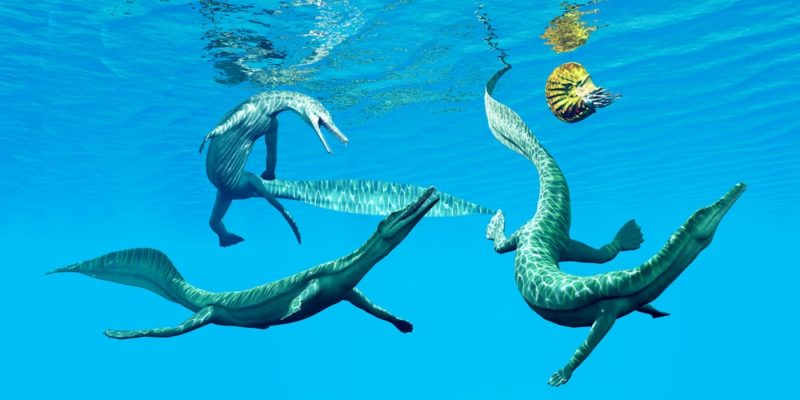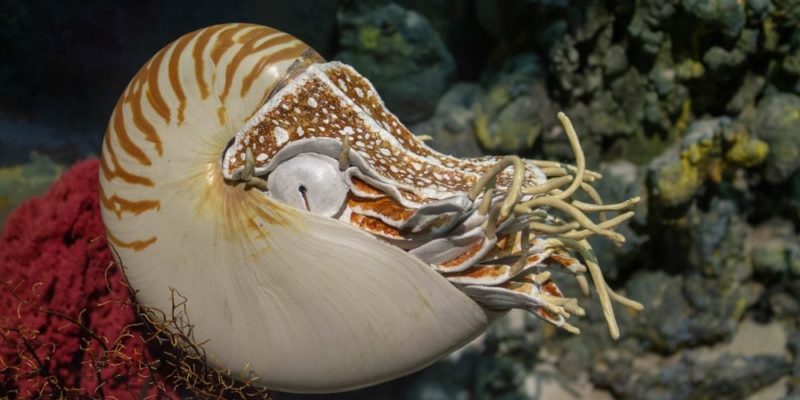We explain what the Permian Period was, how it is divided and the climate it presents. Also, what are its characteristics, flora, and fauna?
What was the Permian Period?
On the geologic time scale, the Permian Period is the last period of the Paleozoic Era (beginning about 542 million years ago and ending about 251 million years ago), post- Carboniferous, and prelude to the Mesozoic Era.
The Permian began about 299 million years ago and culminated 251 million years ago with the Permian-Triassic Mass Extinction, the largest mass extinction event in the history of our planet. Thus ends the Paleozoic Era.
The name of this period comes from the Russian city of Perm, wherein in 1841 the English geologist Roderick Murchison identified the fossils that make up this geological system.
Previous period

The Carboniferous began about 359 million years ago and culminated approximately 299 million years ago. It is the longest period of the Paleozoic Era.
It is one of the most tectonically active times in Earth's geological history. It was the period when amphibians originated and the atmosphere filled more than ever with oxygen.
It witnessed a true explosion of plant life, the reason for the formation of carbon deposits that were later used by humans during the Industrial Revolution (and which also give it its name).
Permian Period Division
The Permian is divided into three Epochs or Series, which span nine Ages or Floors, as follows:
- Cisuralian Period. Begun approximately 298.9 million years ago and ended about 279.3 million years ago, it spans the Asselian, Sakmarian, Artinskian, and Kungurian ages.
- Guadalupian era. Begun 272.9 million years ago and culminated approximately 265.1 million years ago, it spans the Roadian, Wordian, and Capitanian ages.
- Lopingian era. Begun 259.1 million years ago and culminated 254.2 million years ago, along with the Permian period and the Paleozoic Era. It covers the Wuchiapingian and Changhsingian ages.
Permian geological features

During the Permian, the remains of the late Carboniferous glaciation were still felt. Therefore, the level of water remained fairly low throughout the period.
The continental pieces were almost completely united in the micro continent of Pangea. Only Southeast Asia was left out, which was a separate portion throughout the Mesozoic.
Pangea was located on the equator during the Permian, but it extended to the ice-covered poles. It was surrounded by the universal sea, Panthalassa, although the Paleo-Tethys ocean was already growing at the southern tip of the continent.
Permian climate
The Permian began at the end of the ice age, so its initial climate was drier and colder. But in the middle of the period, the planetary climate changed significantly, becoming warmer and milder.
As a consequence, the glaciers receded and the waters of the sea increased. In the interior of Pangea, a hot, desert climate was generated, with great fluctuations between wet and dry seasons.
Permian flora
Inheritance of the Carboniferous, the extensive jungles and continental forests continued in the Permian. They guaranteed an atmosphere rich in oxygen and a prolongation of the same type of flora until more or less the end of the Lower Permian. Gymnosperms dominated the plant scene, with ginkgos and cycads, among other species.
Permian fauna

The land for most of the Permian was teeming with life forms. The insects evolved to their modern appearance. Certain amphibians ended up adapting to life outside of the water.
Thus appeared the first reptiles that did not need water to spawn. From these reptiles later, in the pelycosaur period, the first mammalian reptiles emerged.
At the end of the period, the archosaurs appeared that would give rise to crocodiles, pterosaurs, and dinosaurs in the Triassic period. There were no aerial vertebrates, but insects conquered flight.
In the seas, plankton recovered from the extinction of the Devonian Period and life proliferated in nautiloids, echinoderms, mollusks, and brachiopods. Bony fish and primitive sharks were also developed, which were already heralded as effective predators.
The Mesosaurus appeared towards the end of the period, a reptile returned to the water, going against the general trend. From him, the fierce Mosasaur evolved much later.
Permian-Triassic Mass Extinction

The Permian ends with the most brutal mass extinction our planet has ever seen , both in a number of species lost and in impact on subsequent fauna. Only 5% of the species survived: 96% of the marine species and 98-99% of the terrestrial ones disappeared in the last 5 million years of the period.
The exact causes of such a mass extinction are unknown, but various hypotheses have been put forward:
- Poisoning of the atmosphere by the action of volcanism (volcanic eruptions).
- Release of methane hydrates (a powerful greenhouse gas) that increased global heat by up to 5 ° C due to basalt sprouts.
- Release of hydrogen sulfide (a powerful toxic agent) in marine waters due to the proliferation of anaerobic bacteria due to the drop in oxygen.
Volcanism
Towards the end of the period, volcanic activity had a significant rebound, which would have strongly influenced the world's climate. There were major basalt outbreaks in Siberia and eastern China about 250 million years ago, from which between 2 and 3 million cubic kilometers of material emerged in just 600,000 years.The volcanic eruption likely blackened the skies with ash and reduced the productivity of photosynthesis, allowing further accumulation of atmospheric CO 2 . Furthermore, considering the amounts of carbon accumulated during the previous period, it is possible that the burning magma incinerated them, accumulating more gases in the atmosphere.
Living things of the Permian Period
 Some of the most famous creatures that lived during the Permian period and left a fossil record complete enough for us to know them today are:
Some of the most famous creatures that lived during the Permian period and left a fossil record complete enough for us to know them today are:
- The Nautilus. Arising from the waters of Micronesia, it is one of the few organisms that survived the late Permian extinction, and has changed quite little in its 270 million-year history of evolution. It is a round-shaped cephalopod mollusk , considered a living fossil.
- The Dimetrodon. Already extinct, this genus of synapsid reptiles (similar to mammals ) possessed an enormous dorsal sail consisting of elongated vertebral spines and a membranous tissue between them, which probably served for thermoregulation.
- Ginkgo biloba. Another living fossil, this double-shaped, yellow-leaved tree first appeared 280 million years ago, and today it manages to reach 100 feet in height in its nearly 1,000-year lifespan. Its leaves are used in medicinal recipes.
The Mesozoic Era
The Mesozoic Era (which means "middle life") was the one after the Paleozoic (which means "ancient life"). It was the period in geological history when the world was populated by dinosaurs.These enormous lizards existed for one hundred and sixty million years and abruptly became extinct at the end of the Cretaceous period, the last of those that make up the Mesozoic era along with the Triassic and Jurassic. This was also the era when the first mammals emerged.
The above content published at Collaborative Research Group is for informational and educational purposes only and has been developed by referring to reliable sources and recommendations from technology experts. We do not have any contact with official entities nor do we intend to replace the information that they emit.
MA student of the TransAtlantic Masters program at UNC-Chapel Hill. Political Science with a focus on European Studies. Expressed ideas are open to revision. He not only covers Technical articles but also has skills in the fields of SEO, graphics, web development and coding. .
Leave a reply
Your email address will not be published. Required fields are marked *Recent post

Sport: What Is It, Types, Risks, Features, Characteristics and Examples

Dogs: Emergence, Features, Characteristics, Feeding and Breeds

Story: Definition, Elements, Structure, Features and Characteristics

